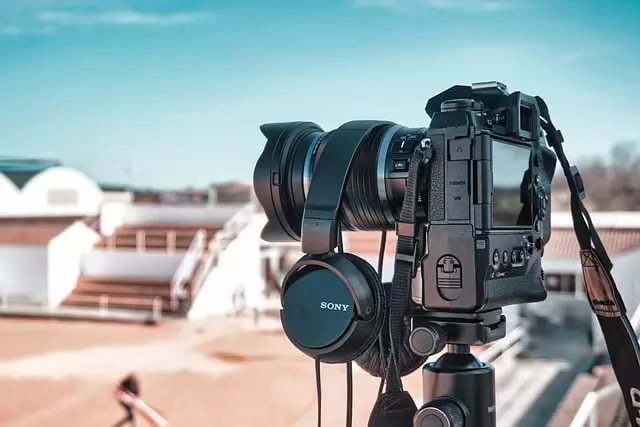In the late 1990s, DivX revolutionized digital media with its innovative video compression format, significantly reducing file sizes while preserving high-quality visuals. Today, despite newer codecs, DivX remains relevant for sharing and enjoying legacy multimedia content on modern devices. Converting DivX videos to universally compatible formats like MP4 using readily available free and paid tools is simple, making it easy to share and access old videos. This process, How to Convert DivX, keeps media optimized for today's digital landscape, preserving the accessible and high-quality distribution once made iconic by DivX.
Streamline Your Digital Media Distribution: Mastering DivX Conversion
DivX, once a pioneer in video compression, has evolved over time as digital media landscapes have changed. Today, converting DivX files for efficient distribution is crucial for reaching wider audiences across diverse devices and platforms. This comprehensive guide delves into the legacy of DivX, highlights the benefits of conversion, and equips you with the knowledge to choose and use powerful conversion tools effectively.
Learn how to transform your DivX videos, optimize them for modern streaming, and ensure seamless distribution through a series of practical steps and expert tips.
# Blog Post Outline: How to Convert DivX for Efficient Digital Media Distribution

Converting DivX is a crucial step in optimizing your digital media for efficient distribution. The DivX format, known for its high-quality video compression, has been enhanced over time to meet the demands of modern streaming and downloading. By converting your media to DivX, you leverage its advanced codecs which significantly reduce file sizes without compromising visual fidelity, ensuring faster load times and smoother playback for your audience.
To convert DivX, users can take advantage of various free and paid tools available online. These tools streamline the process by offering user-friendly interfaces and a range of customization options. Whether you’re preparing videos for online platforms, digital libraries, or personal archives, understanding how to Convert DivX is a valuable skill that ensures your media remains accessible, engaging, and optimized for the digital landscape.
1. Understanding DivX and its Legacy

DivX, a video compression format developed in the late 1990s, revolutionized digital media distribution. Its primary goal was to offer high-quality video files that could be efficiently stored and transmitted over the internet, marking a significant advancement in streaming technology. The DivX codec became renowned for its ability to compress videos without notable quality loss, ensuring a smooth viewing experience even on slower connections.
This legacy continues today as the concept of optimizing media distribution for diverse devices and internet speeds remains pivotal. Understanding how to convert DivX files is essential for those seeking to adapt this pioneering technology to modern needs. With various online tools and software available, converting DivX allows users to share their videos seamlessly across platforms while preserving the quality that made DivX a standard in its time.
– A brief history of DivX as a video compression format.

DivX, a groundbreaking video compression format, emerged in the late 1990s as a game-changer in digital media distribution. Developed by DivX, Inc., it quickly gained popularity for its ability to compress video files significantly while maintaining high-quality visuals. This innovation was particularly pivotal during the early days of online video sharing, where file sizes needed to be reduced to facilitate efficient streaming and download speeds.
The format’s success sparked a revolution in how digital media is handled, leading to a surge in applications that supported DivX. Today, while newer codecs have taken center stage, DivX remains relevant, especially for older multimedia collections. Converting DivX videos to more universally compatible formats, like MP4, using readily available tools is straightforward. This process allows users to share and enjoy their legacy DivX content on modern devices and platforms, bridging the gap between past and present digital media experiences.
– Its popularity in the early digital media landscape.

In the early days of digital media, a format known as DivX revolutionized how we consumed and shared content. This versatile codec offered an unprecedented level of compression, allowing users to enjoy high-quality video files with significantly smaller file sizes. As a result, DivX became a cornerstone in the digital media landscape, empowering individuals to easily convert and share their favorite movies, TV shows, and music. The simplicity of converting DivX files made it accessible to a wide range of users, from tech-savvy enthusiasts to casual consumers looking for more efficient ways to enjoy their multimedia collections.
The popularity of DivX sparked a wave of innovation in digital media distribution. It encouraged the development of user-friendly software and online platforms dedicated to facilitating the sharing and discovery of content. By providing a robust platform for digital media, DivX played a pivotal role in shaping the way we engage with entertainment today. Its legacy continues to influence modern video formats and streaming services, serving as a testament to the power of accessible, high-quality digital media distribution.
– The need for converting DivX to modern formats.

The digital media landscape has evolved significantly since the introduction of DivX, a popular video compression format that revolutionized file sharing in the early 2000s. Today, with the rise of high-definition content and diverse streaming platforms, converting DivX to modern formats is more crucial than ever. Older video formats like DivX often lack the compatibility and quality standards required for today’s digital distribution channels.
Converting DivX videos to contemporary formats such as MP4 or MKV offers several benefits. It ensures your content can be seamlessly played on a wide range of devices and platforms, including modern streaming apps. Additionally, these newer formats support higher resolutions, advanced codecs, and better compression ratios, resulting in improved video quality and smaller file sizes. Thus, learning how to convert DivX becomes an essential step in preserving and sharing your digital media collection effectively.
In conclusion, converting DivX files is a crucial step toward ensuring seamless digital media distribution in today’s evolving landscape. By understanding the legacy of DivX and its initial prevalence, we recognize the need for adaptability. This guide has outlined the process of converting DivX to modern formats, empowering users to optimize their content for diverse platforms and audiences. Embracing these changes ensures a robust platform for digital media distribution, catering to both past and future viewing preferences.
